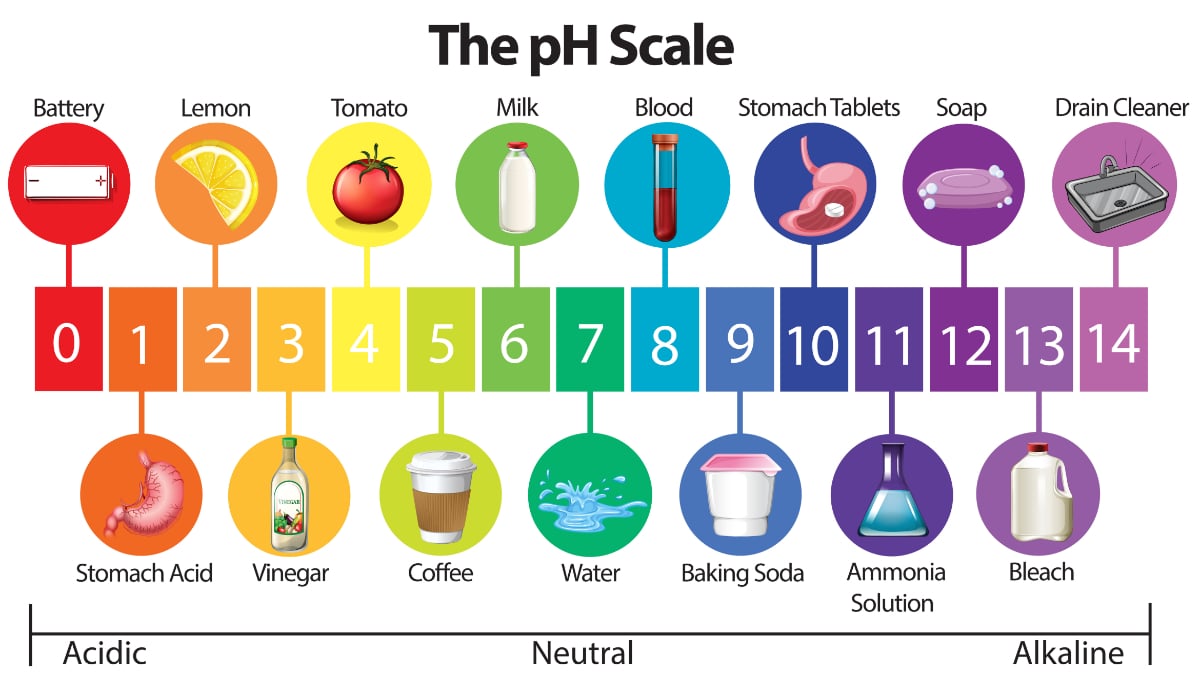
One of the most important indicators for water quality is its pH level. The pH scale runs from 0 to 14 and measures the acid or base quality of water. A pH of 7 is neutral, while a reading below 7 is acidic, and one above 7 is alkaline or basic.
Also check out Water Quality 101: What Is ORP in Water Testing? in this post.
Water quality depends on proper pH levels. In acidic water, for example, toxic heavy metals dissolve easily and are more harmful to living things. The pH level also affects the availability of essential plant nutrients, with many nutrients being less available at a pH above 7
pH and Drinking Water
There is no legally enforceable standard for drinking water pH levels because pH is considered an aesthetic water quality. However, the U.S. Environmental Protection Agency (EPA) recommends a pH between 6.5 and 8.5 for drinking water. Since metals dissolve readily in acidic water, dissolved metals may be present in drinking water with a low pH level. Metals such as iron, manganese, copper, and lead can leach into drinking water from pipes or the local aquifer.
In acidic water, iron causes a metallic taste as well as reddish stains on clothing and plumbing, while other metals such as lead are toxic. Alkaline or “hard” water contains excess calcium and other minerals that cause the familiar scaly deposits on cookware and a bitter taste in coffee
pH and Groundwater
Groundwater flows through rocks and soil that can affect the water’s pH level. For example, contact with sandstone results in a nearly neutral pH between 6.5 and 7.5. Limestone, on the other hand, can result in an alkaline pH of 8.5.
Soils contain minerals and other substances that affect groundwater pH. Decaying organic matter in soils causes pH levels in groundwater to drop as low as 4.0. That pH level is well below the recommended 6.5 to 7.5 pH for drinking water.
Human-induced pollution affects groundwater pH as well. For example, runoff from shale and coal mining contains iron sulfide, which can result in pH readings as low as 2.
pH and Streams and Lakes
The pH level in a lake or stream is crucial for the survival of fish and aquatic plants. Freshwater lakes and streams typically have pH levels between 6.0 and 8.0. Deeper lakes usually have a higher pH near the surface.
Aquatic organisms are sensitive to pH changes. For example, the optimal pH level for fish ranges from 6.5 to 9.0. At levels outside this range, fish become susceptible to poisoning from toxic chemicals. Changes in pH can also cause an overload of available plant nutrients, resulting in excessive plant growth and depleted oxygen levels for fish. This condition, known eutrophication, threatens the survival of plant and animal life in the water.
Water Testing With a pH Meter
Scientists use a pH meter to measure pH levels in the water. The water testing takes place on-site using a relatively small, portable meter or in a lab using a larger benchtop meter. The benchtop meter has a cup that holds the water sample and a glass probe with two specialized electrodes. The pH electrode measures the acidity of the water sample, while the reference electrode is immersed in a liquid with a fixed acidity. After the reading from the pH electrode is compared with the reading from the reference electrode, the meter converts the voltage to a pH level.
A pH meter provides a much more accurate reading than a test strip kit and prevents the mess associated with having to use droppers. Calibration before testing water samples ensures that the pH meter will provide accurate readings and test results.
Importance of pH in Water
Water quality is crucial for all living things, as well as for agriculture and recreation. Optimal pH levels are an essential factor in maintaining water quality and healthy ecosystems. Accurate pH testing helps keep drinking water and groundwater safe and helps protect aquatic plants and animals.

Comments